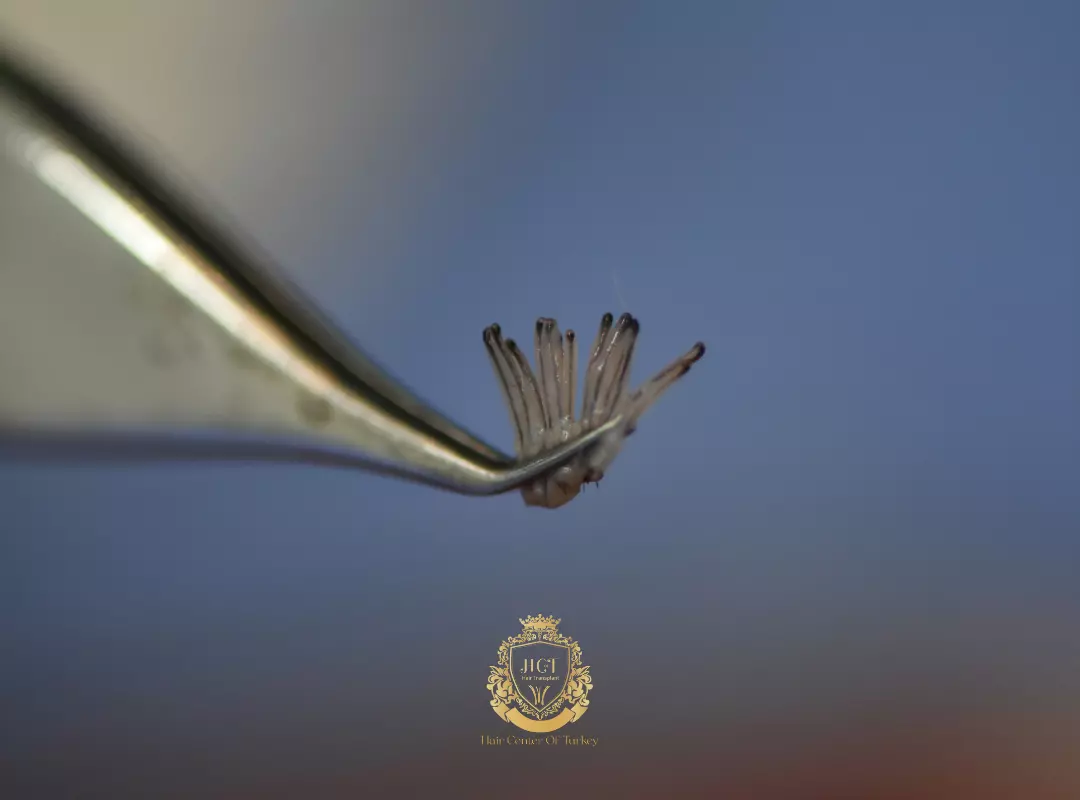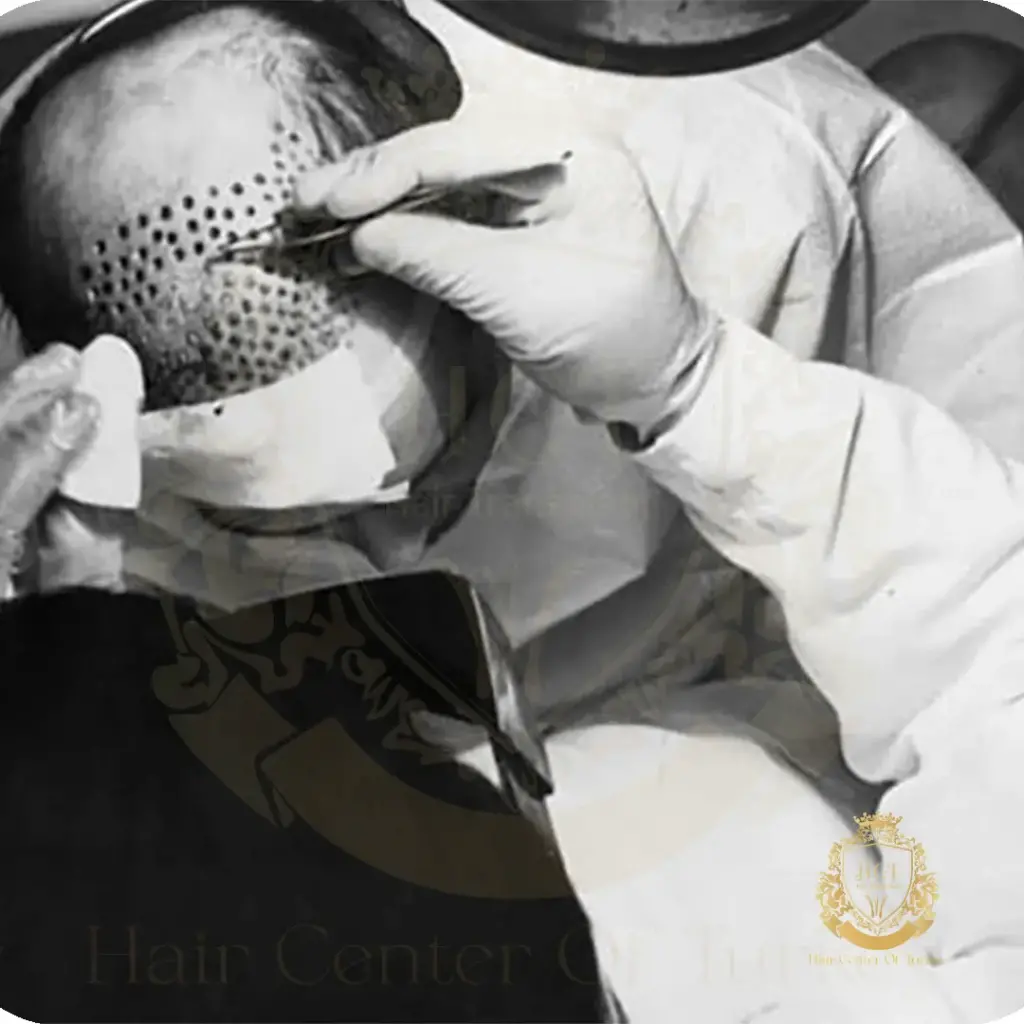
What is a graft?
The term graft is a term frequently used in hair transplants. However, outside of hair restoration, graft is a medical term that is generally used in the sense of transferring tissue taken from one part of your body to another part.
One of the most common terms encountered by those who want to have a hair transplant is the term graft. Questions such as what is a graft in a hair transplant, how many grafts are required at least in hair transplantation, and how do I know how many grafts I need, attract the attention of patients. In this article, we will examine the answers to the questions you wonder about grafts in hair transplants. So let’s get started.
What is a Graft in Hair Transplant?
Transplanting healthy and strong hair follicles from the donor area to the bald area is called hair restoration. In hair transplantation, graft is the name given to the piece of tissue in which hair follicles are found together. Generally, patients think that hair follicles are removed one by one. However, a graft is a piece of tissue containing at least 2-3 hair follicles. In other words, in hair transplant, not hair strands, but a piece of tissue with hair follicles, without nerve and vascular connections, is removed and transplanted to the bald area.
The quality of the grafts is very important in hair restoration. The number of grafts in the hair follicles varies according to the hair quality of the person. Accordingly, the number of grafts varies according to the genetic factor taken from the family and hair quality. In this sense, the hair follicles in the grafts can be between 2 and 4.
How do you calculate how much hair you will have?
When you go to hair transplant clinics, they give you information about the number of grafts to be transplanted. In this case, patients may be worried about how many hair strands they will have. When you are told that 2000 grafts can be transplanted, you can calculate how many hair strands will grow as follows. Considering that there are 3 hairs on average in a transplanted graft, the number of hairs to be transplanted will be 6000 NEW hairs.
How many grafts should there be in hair transplantation?
The number of grafts to be transplanted to the donor area depends on the hair density desired by the patient and the number of grafts that can be obtained from the donor area. For hair transplant, the patient must have enough hair in the donor area. The number of grafts in hair restoration varies according to the size of the area the patient wants to have transplanted. For example, an average of 100 grafts is required for a patient who wants to have eyebrow transplant, while 150-200 grafts are transplanted at most for people with openings in the temporal areas.
On the other hand, in men, the front part of the hair is the most common place where openness is seen. 1500 to 6000 grafts can be transplanted to these areas in one session. However, since it becomes difficult for the grafts to maintain their vitality as the transplantation process prolongs, it is recommended to perform the restoration procedures in 2 sessions.
Since hair transplant procedures are performed with hair follicles taken from the donor area, it is also important to preserve the general appearance of the donor area. In order to protect the hair in the donor area, it is not recommended to take around 6000-7000 grafts in the first session. Performing a hair transplant in at least 2 sessions according to the desired hairstyle of the patient ensures a healthier procedure.

What determines the number of grafts in hair transplant?
The number of grafts to be transplanted to the patient in a hair transplant varies according to the patient’s hair loss rate, desired hair density or hair shape. Before hair restoration, the patient’s hair loss rate is determined according to the Norwood scale. The Norwood scale is a universal scale that determines the rate of hair loss in a person. According to this scale, the hair loss rate is determined according to a ratio between 1-7. According to this scale, the most ideal number of grafts to be performed on the patient is determined.
According to the Norwood scale, hair loss houses are as follows:
- Norwood Scale Stage 1: According to the Norwood scale, stage 1 is considered to be the stage where hair loss occurs normally. In this stage, which is seen during the transition from adolescence to adulthood, hair loss is not significant and does not change the appearance of the person too much. If people in this stage do not have a genetic hair loss problem, no hair surgery is required. However, people who have hair loss problems with genetic factors can have 0-1000 graft transplantation in order to increase hair density.
- Norwood Scale Stage 2: In this stage, it is seen that hair loss regresses to the 1-2cm level of the hairline. This stage usually manifests itself in adults and older ages. In this stage, which is accepted as the hair loss stage, there are things that patients should pay attention to. If an abnormal situation is encountered in the amount of hair loss during this phase, a doctor should be consulted. If the cause of hair loss is not due to genetic factors, hair loss can be eliminated with alternative treatment methods. However, if hair loss is due to genetic factors, you can prevent hair loss by performing hair transplantation. If you want to have hair transplantation in this area, which reveals the opening in the front area of the hair, you can have 1000-1500 grafts transplanted.
- Norwood Scale Stage 3: This stage of the hair loss scale is also called the onset of baldness. In this stage, hair loss is concentrated in the frontal hairline and the area called the vertex (vertex) of the head. At this stage, the front part of the hair will take the shape of V, M, and U, which significantly affects the appearance of the patients. However, weakening and thinning will also be seen throughout the hair. The loss of self-confidence that hair loss can cause negatively affects people’s lives. The negative effects of hair loss can lead to problems in social and professional life.
- Since hair loss at this stage cannot be corrected with medication or other treatment methods, hair transplantation operations can be applied. At least 2000 – 3000 grafts can be transplanted for hair loss on the crown and frontal line of the hair. Approximately 1500-2000 grafts can be transplanted for the front line of the hair and 500-1000 grafts for the crown or vertex area.
- Norwood Scale Stage 4: In this stage of hair loss, the crown and hairline become distinctly bald. If the hair gap here is not intervened, patients may face a more severe hair problem. In this stage, where the hair in the frontal hair area is completely lost, at least 3000 grafts may be required to achieve successful results in hair restoration procedures. In order for the patient to have more natural and dense hair, 4000 or more grafts can be transplanted.
- Norwood Scale Stage 5: In this stage of the hair loss scale, it is seen that the front hair area of the person is completely lost. Apart from that, the crown area is also clearly opened. At this stage, the only treatment method that people with hair loss can apply is hair transplantation. You can get advice by contacting the best hair transplant specialist for you. With hair restoration, the areas with hair loss can be covered and hair density can be increased. At this stage of hair loss, it would be appropriate to transplant at least 3500 grafts to ensure that the front hairline has a beautiful appearance. In order to gain a more dense and dense appearance, 4000 grafts can be used.
- Norwood Scale Stage 6: At this stage of the hair loss phase, the rate of hair loss is quite severe. The hair between the crown and the frontal area is almost non-existent. The rest of the hair shows significant thinning and loss. At this stage, the patient should undergo a serious hair transplant operation in a good clinic. At stage 6 of the Norwood scale, patients will need at least 4500 grafts to cover the front of the hair. On the other hand, you may need about 6000 grafts for complete closure and for the hair to appear dense and dense.
- Norwood Scale Stage 7: In the last stage of the hair loss scale, the most severe stage of what we know as male pattern baldness occurs. At this stage, the crown area of the person is completely open, with only weak hair on the sides. At this stage, up to 7000 grafts may be required to completely close the bald area. If the donor area allows a second hair transplant, a second hair transplant surgery can be performed. However, this procedure is not possible in a single session. A second hair transplant surgery is also needed for the health of the patient and the donor area. If there are no healthy and strong hair follicles in the donor area, it is not possible to perform hair transplantation.
Hair, beard, and eyebrow transplantation is performed in the Hair Center of Turkey hair transplant clinic under the supervision of experienced specialist doctors. If you are experiencing hair loss or complaining of sparse or bald scalp, you can apply to our hair transplant clinic. You can ask all your questions about hair, eyebrow, and beard transplantation by calling our consultants at the Hair Center of Turkey hair transplant clinic.


